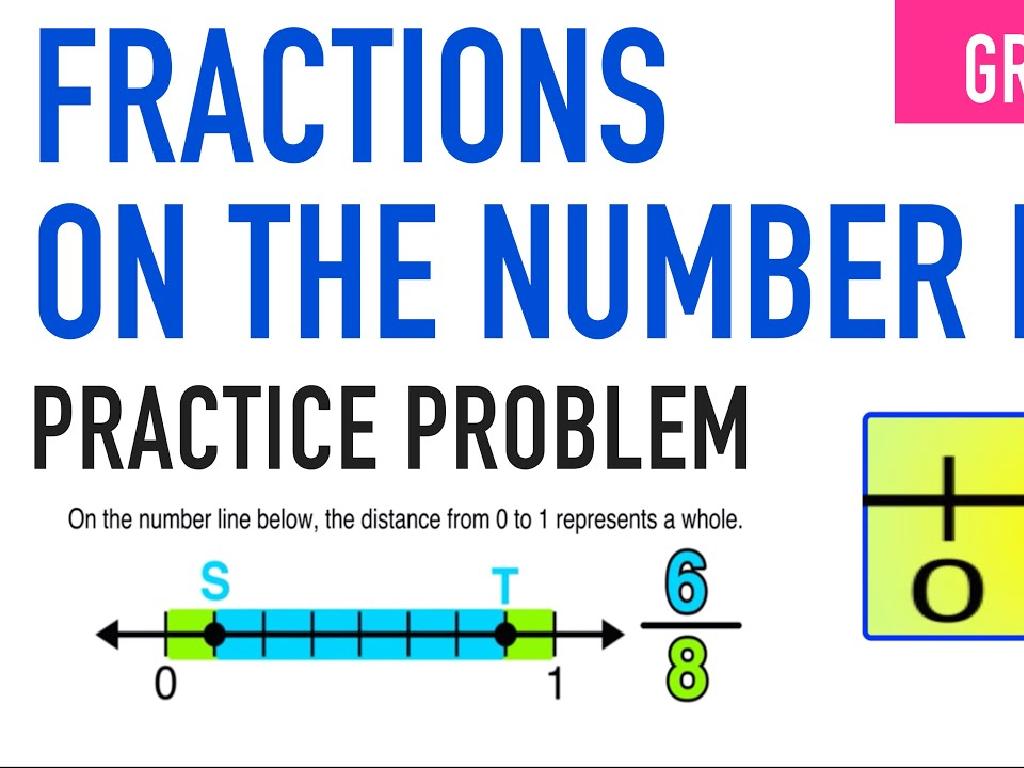Match Offspring To Parents Using Inherited Traits
Subject: Science
Grade: Fourth grade
Topic: Traits And Heredity
Please LOG IN to download the presentation. Access is available to registered users only.
View More Content
Traits and Heredity: Inherited Traits
– How traits pass from parents to kids
– What are inherited traits?
– Traits like eye color or leaf shape that are passed down
– Examples in humans, plants, animals
– Human: eye color, Plant: leaf shape, Animal: fur pattern
– Recognizing inherited traits
|
This slide introduces the concept of traits and heredity, focusing on how certain characteristics are inherited from parents to their offspring. Begin by explaining that traits are features or qualities that can be passed down through generations. Emphasize that inherited traits are those that are written in our DNA and can be predicted to an extent. Provide relatable examples such as eye color in humans, leaf shape in plants, and fur patterns in animals to help students connect with the concept. Encourage students to think of traits they have inherited from their parents. This will set the foundation for understanding genetics and the study of heredity in more detail.
What Makes You Unique?: Inherited Traits
– Discuss human inherited traits
– Traits passed from parents to children, like eye color
– Activity: Spot your inherited traits
– Look at your hair, eyes, and more. What looks like mom or dad?
– Share traits with classmates
– Tell your friends about your traits
– Compare traits among friends
– See what traits you have in common or different
|
This slide is aimed at helping students understand the concept of inherited traits characteristics passed from parents to their offspring. Begin with a discussion on common inherited traits in humans, such as eye color, hair color, and earlobe attachment. The activity involves students examining their own features and identifying which traits they may have inherited from their parents. Encourage them to share their findings with classmates and engage in a discussion comparing their traits. This will help them grasp the concept of inheritance and variation in a fun and interactive way. For the teacher: Prepare a worksheet with a list of common traits and a space for students to mark their own. Facilitate the sharing session and guide the students to respect and celebrate the diversity in the classroom.
Animal Traits: Inherited Characteristics
– Exploring inherited traits
– Traits like fur color are passed from parents to offspring.
– Examples: rabbits and tigers
– Notice how baby rabbits inherit fur color and tigers inherit stripes.
– Video: Baby animals with parents
– Observe similarities between baby animals and their parents in the video.
– Understanding heredity
|
This slide aims to help students understand the concept of heredity by exploring how offspring inherit traits from their parents. Use examples like fur color in rabbits, which can be brown, white, or black depending on their parents’ genes, and the distinctive stripes of tigers, which are unique to each individual but inherited from their parents. Show a video clip of various baby animals alongside their parents to visually demonstrate these inherited traits. Encourage students to observe the similarities and differences between the parents and their offspring, fostering an understanding of heredity. After the video, discuss with the class other traits animals might inherit and why it’s important for survival in the wild.
Plant Traits and Inheritance
– Understanding plant traits
– Traits are features or characteristics of a plant, like leaf shape or flower color.
– Plants passing traits to offspring
– Just like animals, plants have genes that determine their traits, which they pass to their seeds.
– Activity: Match seedlings to parents
– Look at the young plants and guess which are their parents based on their traits.
– Observing inherited traits
– Notice how some traits are more common in the offspring, showing inheritance.
|
This slide introduces the concept of heredity in plants, explaining that traits are passed from parent plants to their offspring through genes. Start by discussing different traits that can be observed in plants, such as the type of leaves, color of flowers, or the height of the plant. The activity involves students looking at seedlings and trying to match them with the parent plants based on similar traits, which will help them understand how traits are inherited. Provide guidance on how to observe the traits and encourage students to discuss why some traits might be more common than others. This hands-on activity will help solidify the concept of heredity by providing a visual and interactive experience.
Dominant and Recessive Traits
– What are dominant traits?
– Dominant traits overpower recessive ones and are more likely to be expressed.
– What are recessive traits?
– Recessive traits only show up if the organism has two copies of the recessive allele.
– Examples of each trait
– Brown eyes (dominant), blue eyes (recessive), attached earlobes (recessive)
– Coin flip experiment
– Heads for dominant traits, tails for recessive. Record the outcomes!
|
This slide introduces the concept of dominant and recessive traits to the students. Dominant traits are those that are more likely to be expressed in an organism, while recessive traits require two copies of the allele to be visible. Provide clear examples such as eye color and earlobe attachment to illustrate the difference. The class experiment with the coin flip will help students understand how traits are passed on and the role of chance in genetics. Each student or group will flip a coin to determine the traits of a model organism, simulating real genetic inheritance. This hands-on activity will engage students and help solidify their understanding of heredity.
Matching Offspring to Parents
– Understanding inherited traits
– Traits passed from parents to babies
– Group activity: Baby animal matching
– Match pictures of baby animals to their parents
– Using traits to identify parent-offspring
– Look at color, shape, patterns to match
– Discussion and examples
|
This slide introduces the concept of inherited traits and sets up a group activity for students to apply their understanding. Inherited traits are characteristics that are passed from parents to their offspring, such as fur color, beak shape, or leaf patterns in plants. During the activity, students will work in groups to match pictures of baby animals to their parents using visible traits. After the activity, lead a discussion on how certain traits can be used to identify relationships between offspring and parents. Provide examples such as a baby bird’s beak shape resembling its parents’ or a kitten having the same fur pattern as its mother. This interactive approach helps students grasp the concept of heredity in a tangible and engaging way.
Traits and Environment
– Inherited traits vs. environmental influences
– Traits passed down from parents, while environment can modify them
– Examples of environmental effects
– Sunlight affects plant color, nutrition influences height
– Discussion on trait expression
– How does a plant’s color change in different light conditions?
– Understanding trait variation
– Different environments can cause variations in the same species
|
This slide aims to help students differentiate between inherited traits and those influenced by the environment. Inherited traits are passed down from parents to offspring, such as eye color or leaf shape in plants. Environmental influences, however, can affect how these traits are expressed. For example, plants may change color based on sunlight exposure, or a person’s height can be influenced by their diet. During the discussion, encourage students to think about how different environments might change the way traits are shown in animals and plants. This understanding is crucial for grasping the complexity of heredity and the role of the environment in shaping organisms.
Class Activity: Trait Scavenger Hunt
– Find classmates with specific traits
– Record your trait observations
– Note traits like hair color, eye color, etc.
– Discuss findings in groups
– Share what traits you found common
– Understand heredity through traits
– Traits can tell us how parents’ features pass to children
|
This interactive class activity is designed to help students observe and understand heredity by finding and recording inherited traits among their classmates. Provide a list of traits for students to observe, such as hair color, eye color, dimples, or earlobe attachment. Students will then record their observations and discuss in groups what these traits reveal about how physical characteristics are passed down from parents to offspring. Encourage them to consider dominant and recessive traits and how these can influence the likelihood of traits being inherited. The activity will culminate in a class discussion to consolidate their understanding of heredity. Possible variations of the activity could include matching traits to hypothetical parents or creating a classroom trait frequency chart.
Conclusion: Traits and Heredity
– Recap: Inherited Traits
– Traits passed from parents to their children
– Quick Quiz Activity
– Test your knowledge with a fun quiz
– Q&A Session
– Ask questions to clarify your understanding
– Understanding Heredity
|
As we wrap up our lesson on traits and heredity, let’s review the key concept that traits are characteristics inherited from parents. These can include physical features like eye color or leaf shape in plants. Conduct a quick quiz to reinforce the students’ understanding and make it interactive to keep them engaged. Following the quiz, open the floor for a question and answer session, allowing students to ask any lingering questions they may have. This will help ensure that all students leave the class with a solid understanding of how traits are passed down through generations. Encourage students to think of examples from their own families or nature to connect the lesson to the real world.
Homework: Your Family Tree of Traits
– Create your own family tree
– Focus on one inherited trait
– Choose a trait like eye color or hair type
– Share your tree in class
– Get ready for a traits discussion
– Think about how this trait appears in your relatives
|
This homework assignment is designed to help students apply their understanding of inherited traits in a personal context. By creating a family tree, students will visualize how a specific trait is passed down through generations. Encourage them to choose a trait that is easily observable, such as eye color, hair color, or even earlobe attachment. In the next class, students will present their family trees and discuss the patterns they observed. This will reinforce the concept of heredity and provide a foundation for understanding genetics. The discussion will also allow students to see the variety of traits within their own families and classmates’ families, highlighting the uniqueness and complexity of inheritance.





